At Westminster Strength and Conditioning we have a lot of strong women. At our gym, we take it for granted too often because we are literally surrounded by women who to the general public or gym goer can do absolutely amazing things. We have several women who deadlift over 300 pounds. It’s normal to see women we have pulling in the mid to high 200s for sets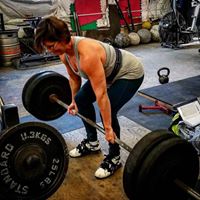 of 5. Women weighing in below 140 pounds squat close to or over 200 pounds for reps. We have women pressing 100 pounds and benching their body weight. They do strict chin-ups and dips. When those outside of WS&C read this it’s easy to imagine huge women with bulging muscles hoisting massive weights above their heads or 20 year old athletes in their prime squatting insane amounts of weight.
of 5. Women weighing in below 140 pounds squat close to or over 200 pounds for reps. We have women pressing 100 pounds and benching their body weight. They do strict chin-ups and dips. When those outside of WS&C read this it’s easy to imagine huge women with bulging muscles hoisting massive weights above their heads or 20 year old athletes in their prime squatting insane amounts of weight.
For those of you who have peeked in our doors, you know this could not be further from the truth. The overwhelming majority of the women at WS&C who lift huge amounts of weight are not 20 years old, they do not currently play a sport, most have a couple or more kids, are in their 30s, 40s or 50s and do not look manly or like overweight power lifters. Truth be told they look exactly as a healthy, strong woman should. They are athletic and strong; they carry themselves with confidence. They are empowered. It’s hard not to be confident when you go through your day knowing you are stronger than every person you talk to, even the men!
Nearly every woman that walks into our door for the first time has a glimmer of understanding that they need to be stronger. They understand on some level that they need to increase upper body strength, leg strength and what they usually term “core” strength. For many, I think they begin to recognize this fact as soon as they have kids. Up until that child starts running around and squirming like a squid when you try to leave the store, it’s easy to muddle through the “portable” months without a basic level of strength. Once you try to sprint down a 2 year old, sling them with one arm and carry 3 bags of groceries and a 20lb diaper bag, you quickly realize the need for greater strength. I’m pretty certain this is why about 70% of our members are women. Nevertheless, there are actually a few more reasons to get strong if you are a woman other than being able to carry your children like a sack of feed.
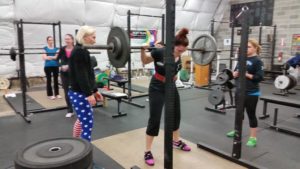 As a matter of fact, the most important benefits from strength training CANNOT be gained by other means. Running, biking, swimming, Body Pump, spinning, CrossFit, P90X, and Zumba cannot produce the most important adaptations for women that training with a barbell can and will produce. This is important to remember and understand. While exercise is great and I’m glad you are doing something, you must understand that if your exercise of choice does not involve progressive training with a barbell you are missing out on some pretty important adaptations to keep you functional and healthy later in life and make your daily tasks easier. Let me be clear. If you do one of the above mentioned exercise programs, I applaud you. You are moving and you are making yourself healthier. Keep it up. My hope is that this article dispels a few myths about women and strength training and allows you to gain a better understanding of the benefits of strength training.
As a matter of fact, the most important benefits from strength training CANNOT be gained by other means. Running, biking, swimming, Body Pump, spinning, CrossFit, P90X, and Zumba cannot produce the most important adaptations for women that training with a barbell can and will produce. This is important to remember and understand. While exercise is great and I’m glad you are doing something, you must understand that if your exercise of choice does not involve progressive training with a barbell you are missing out on some pretty important adaptations to keep you functional and healthy later in life and make your daily tasks easier. Let me be clear. If you do one of the above mentioned exercise programs, I applaud you. You are moving and you are making yourself healthier. Keep it up. My hope is that this article dispels a few myths about women and strength training and allows you to gain a better understanding of the benefits of strength training.
So why is progressive loading (adding weight to a barbell as the trainee gains strength) with the major barbell movements (squats, deadlifts, presses) so important for women? And what adaptations occur during progressive loading of the squat, deadlift and press that do not happen with running, spinning, biking, Zumba, Body Pump or just about any other exercise program lacking in progressive loading of major barbell movements? There are several benefits but we will focus on two of the more important ones here (besides looking and feeling better of course, those are a given)! Increased bone mass and increased force production (strength) are of utmost importance medically AND aesthetically speaking. Lets talk about bone mass first.
I cannot think of many physical adaptations to exercise that would be more important for women than increased bone mass. Bone loss (osteopenia/osteoporosis) as you age is a pretty big problem . When your bones lose mass they become weakened and brittle causing them to break easier. We could toss up some interesting and compelling statistics but I think you all know someone near to you who has fallen and broken a hip, back, or arm later in life. You also know where the problem leads. Many times this is the event causing your grandparent or loved one to begin the discussion of long term care. At this point, it becomes increasingly difficult for them to care for themselves and continue to live independently. Here’s the thing, we can go a long way in preventing this type of situation both in the elderly and long before while we are still young. We will all begin to lose bone mass as we age. This is simply a fact of life we must face. But how we deal with it is what matters.
Think of your bone mass as your 401k of bone health. The more you have now the more you are likely to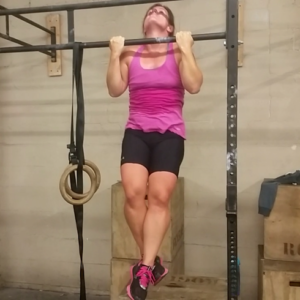 have when you are 70. Remember, we will begin losing it as we age. If you have more to lose during the normal aging process, the more you retain as you age. Now add to the fact that strength training will also slow that loss and you have a pretty good chance of maintaining healthy strong bones later in life. No broken hips in your future. So how do bones adapt favorably to strength training and why do they not with running, biking, swimming or many other exercise activities?
have when you are 70. Remember, we will begin losing it as we age. If you have more to lose during the normal aging process, the more you retain as you age. Now add to the fact that strength training will also slow that loss and you have a pretty good chance of maintaining healthy strong bones later in life. No broken hips in your future. So how do bones adapt favorably to strength training and why do they not with running, biking, swimming or many other exercise activities?
The body is an amazing system and adapts to all sorts of stress. The first adaptation most of us think about when we discuss strength training is to the muscular system. This is where images of Arnold pop into our head and this is enough to end the thought of squats, presses and deadlifts for most women. After all, they don’t want to look like Arnold. But the muscular adaptation is far from the only adaptation. The next in line, the skeletal system experiences some pretty radical adaptations to the same stress the muscular system adapts to. Muscles attach to bones. Muscles need those bones to produce movement. They pull at their attachments of the rigid bones and produce movement around joints. Muscles, tendons, ligaments, and bones function as a system and adapt as a system to stress.
So why does weight bearing exercises produce favorable adaptations to bones and running does not? Why do you need to squat, press, and deadlift and carry heavy things to increase bone mass? We will keep this pretty simple so we do not get bogged down in the details but there are a few things about your bones’ ability to increase mass that you should know. When a bone experiences a sufficient stress, called Minimal Essential Strain (this could be bending, compression, torsion or even muscles pulling at their attachments) specialized cells called Osteoblasts are signaled to move to the surface of the bone. The Osteoblasts are responsible for producing new bone material to strengthen the bone and increase it’s Minimal Essential Strain. In essence, when you produce enough force to bend the bone slightly the body recognizes this and signals specialized cells to prevent that bending in the event the same force is experienced again. This is the skeletal system’s adaptation to stress.
How does this work in your exercise program? Let’s say you wake up one day and decide to “get in shape”. Most people will pick a day, head outside and go for a run. During that first run when your heel strikes the pavement, the bones of your lower leg and femur experience a stress and the Minimal Essential Strain is met (your body weight impacting the ground), Osteoblasts are signaled and new bone formation begins. Perfect right? Well, almost. What happens several months later when you have run three times a week getting ready for the half marathon? Still laying down new bone mass? Probably not, because your body has already adapted to that stress. It’s not going to signal Osteoblasts to produce more bone material in the absence of a greater stress. I guess you could strap on a loadable weight vest and slowly increase the load as you run but who the hell would want to do that? How about bicycling? New bone mass? How about swimming? Body Pump? Or P90X? You guessed it. These activities are limited in their ability to continue to increase the stress applied to bones to drive the formation of new bone material. You may be getting “in shape” but you are not doing much for new bone growth and remember your bone health is like a 401k. More bone mass now means more bone mass later as you begin to lose it. We are in a race to build bone mass and there must be a better way.
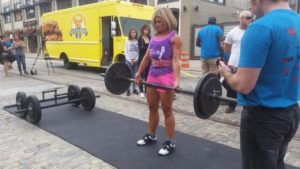 So what do you do to continue to produce a sufficient stress to the skeletal system to lay down as much bone mass as possible or to slow your loss of bone and decrease bone turnover? You squat, press and deadlift while progressively loading these movements over time. When you place a bar on your back, squat down and stand back up you are producing force from your feet up through both legs, through the hips, through the spine and finally delivering that force to the barbell. Nearly every biological system in the body produces a favorable adaptation to this load, including your bones. You squat today with 55 pounds on your back and you have signaled Osteoblasts to begin bone modeling. Squat next week with 60 pounds and the process continues. The beauty of the barbell is we can continue this progressive loading for a very long time. Remember those women at our gym we mentioned in the first paragraph? They started with light loads and increased the loads over a couple of years. They have been modeling new bone material for years and as they continue to get stronger, they continue to add to their bone 401k. They are doing something today that will have a lasting impact on their bodies for the rest of their life.
So what do you do to continue to produce a sufficient stress to the skeletal system to lay down as much bone mass as possible or to slow your loss of bone and decrease bone turnover? You squat, press and deadlift while progressively loading these movements over time. When you place a bar on your back, squat down and stand back up you are producing force from your feet up through both legs, through the hips, through the spine and finally delivering that force to the barbell. Nearly every biological system in the body produces a favorable adaptation to this load, including your bones. You squat today with 55 pounds on your back and you have signaled Osteoblasts to begin bone modeling. Squat next week with 60 pounds and the process continues. The beauty of the barbell is we can continue this progressive loading for a very long time. Remember those women at our gym we mentioned in the first paragraph? They started with light loads and increased the loads over a couple of years. They have been modeling new bone material for years and as they continue to get stronger, they continue to add to their bone 401k. They are doing something today that will have a lasting impact on their bodies for the rest of their life.
We all know we need stronger bones. How about increased force production? Why is being stronger so important? For most of the same reasons having bigger, stronger bones is equally important. As we age, we will continue to lose strength. The beauty of strength is that it is a persistent adaptation. It takes several years to get strong because you are modeling new tissue. Again, remember our ladies in the first paragraph. It took them two years to get as strong as they are, but it will also take them a very long time to lose this hard-earned strength. This is quite different from your cardiovascular adaptation. We all know we can get in pretty good running shape in a couple months at most. We also know that when we take a break we lose that same adaptation pretty quickly (within weeks).
The second part of the importance of building strength is its application to everyday life. Most of life is a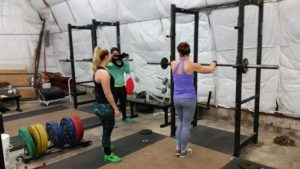 force production sport (strength) not a cardiovascular event. Think back to the example we used of chasing your kids and picking them up in the grocery store then carrying them and three bags to the car. If you get winded doing this and mistake being “out of shape” with being weak, you would be wrong. If this is difficult for you, it’s because you are weak. Not because you are “out of shape”. When we increase your ability to produce force and make you twice as strong as you are, you will not see many (if ANY) of your daily tasks as a cardiovascular event. You will see them as strength events ALL made easier by being stronger. This may piss a lot of runners off which is not my intention, but NO ONE will care when you’re 80 what your marathon time was when you were 30. They will care if you have the ability to get up if you fall (strength), carry the groceries from the car (strength), stand up from a chair or a toilet (strength), and generally take care of yourself (strength). Remember, the more strength we build now the more we will have to draw from as we begin to lose it and the better we can slow the process of inevitable strength loss.
force production sport (strength) not a cardiovascular event. Think back to the example we used of chasing your kids and picking them up in the grocery store then carrying them and three bags to the car. If you get winded doing this and mistake being “out of shape” with being weak, you would be wrong. If this is difficult for you, it’s because you are weak. Not because you are “out of shape”. When we increase your ability to produce force and make you twice as strong as you are, you will not see many (if ANY) of your daily tasks as a cardiovascular event. You will see them as strength events ALL made easier by being stronger. This may piss a lot of runners off which is not my intention, but NO ONE will care when you’re 80 what your marathon time was when you were 30. They will care if you have the ability to get up if you fall (strength), carry the groceries from the car (strength), stand up from a chair or a toilet (strength), and generally take care of yourself (strength). Remember, the more strength we build now the more we will have to draw from as we begin to lose it and the better we can slow the process of inevitable strength loss.
Of course the barbell is the best tool for gaining this strength for the same reason it works so well for gaining bone mass. We can continue to load the barbell incrementally over time. It loads the muscular system using the most amount of muscle mass over the greatest range of motion (the squat), and it’s the most efficient way to gain strength. When choosing exercises with a barbell to gain strength and bone mass always favor compound exercises that use the most muscle over the longest range of motion. This is the reason why the squat, press, and deadlift are the kings of weight bearing exercise. No other movement has the capacity to produce as much favorable adaptation to the biological system. So why are you not squatting, pressing and dead-lifting? No matter how old you are it is NEVER too late to start.
Tags: squats, strength training, women's strength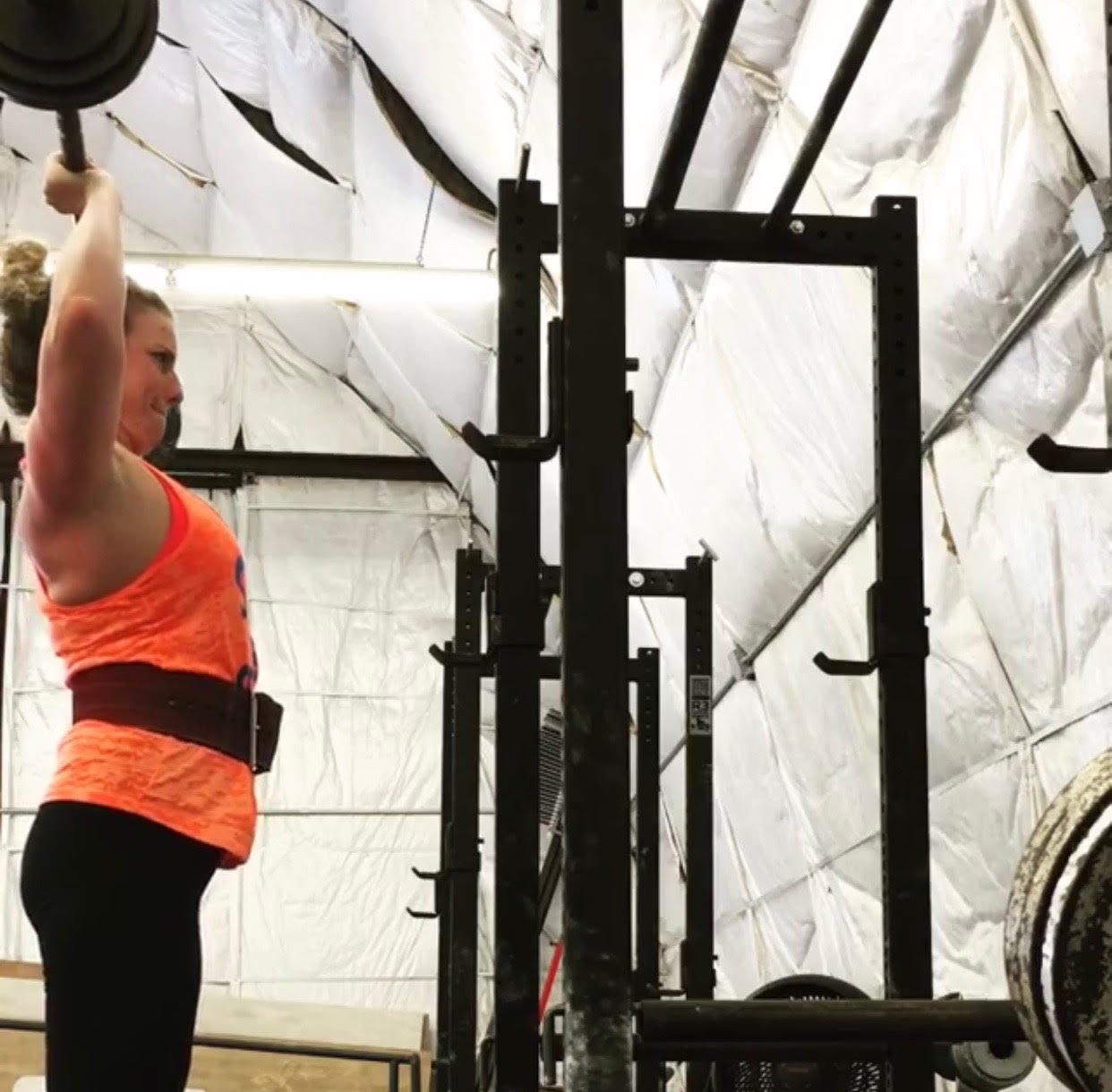
Thank you for such a brilliant informative article. I am sending it to all the people who ask why I lift!